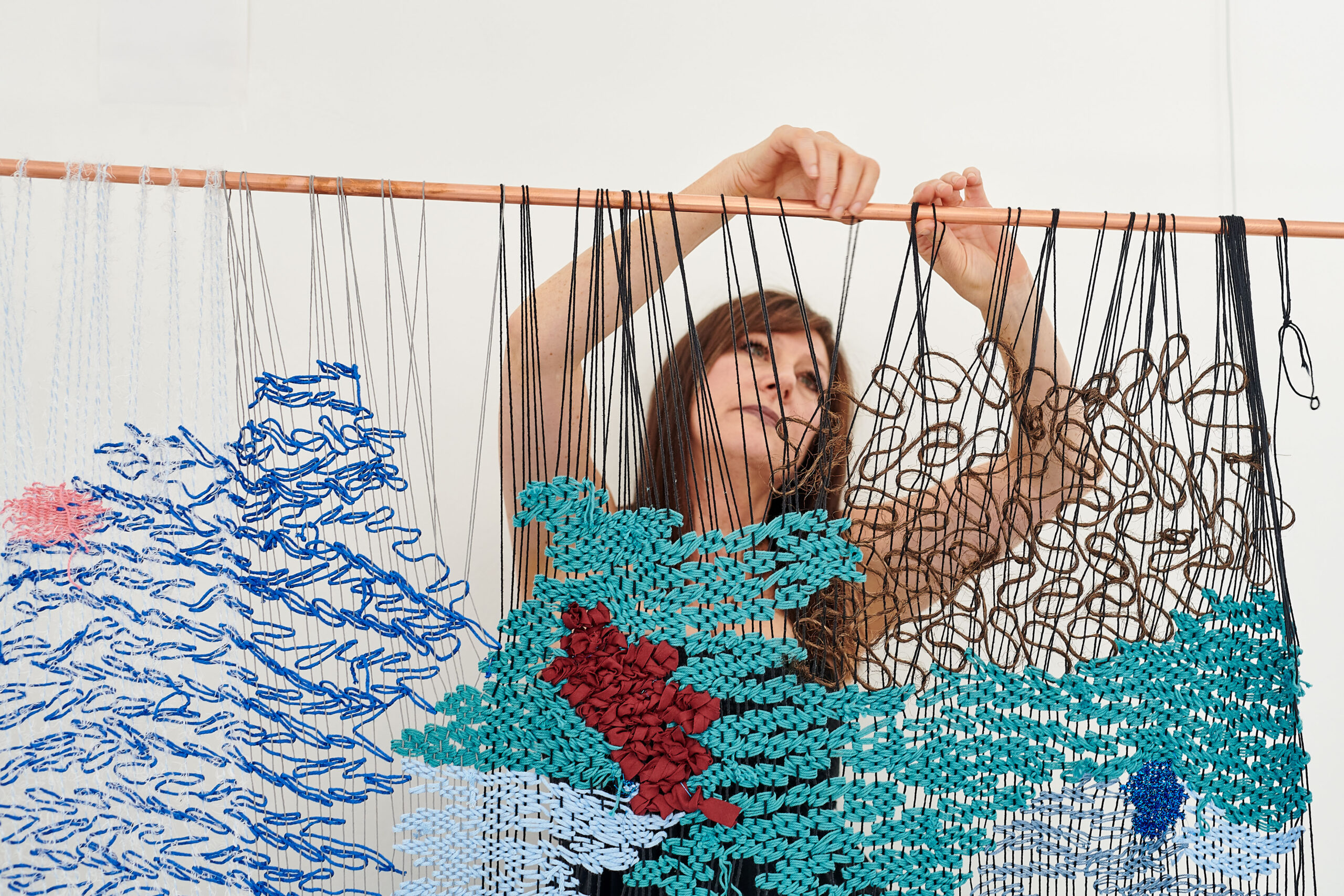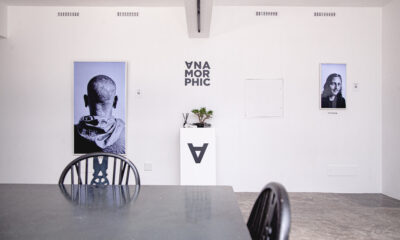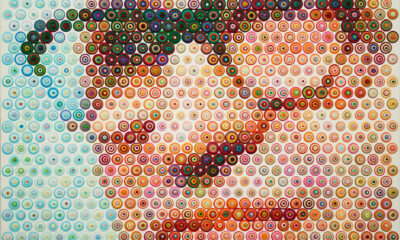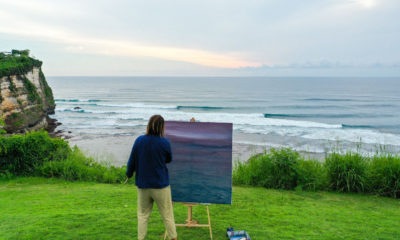
Featured Item

Tapestry of care takes artist back to her origins
“When I was exhibiting in Hong Kong, I met a brilliant curator who made a comment which stuck with me – that the soft arts are always the place of ‘the other’,” said artist Bev Butkow, whose exhibition re-weaving m/other opened at the Wits University Origins Centre on Sunday, 20 August.
“It’s women, it’s people of colour, queer people, etcetera, who are the ones often working with sewing and tapestry, weaving, crochet, and knitting and bringing all of that back into the world. And that was really the basis on which I started the show and where “m/other” comes from in the title.
“It’s the place of the other, as the female, the non-dominant in society, the ones whose voices we need to now amplify and reassert back into social structures, whether it’s economic, political, cultural, or social. It’s about amplifying the place of the other, but also recognising that what we have as women is such a valuable way of being in the world.”
Butkow wasn’t always an artist. In fact, she had a successful corporate career as a chartered accountant. However, after she had her fourth child, she gave up work and slowly ventured into the art world. She decided to go back to the University of the Witwatersrand to do her honours in art history and finished her Master’s in Fine Art last year. “It’s been an amazing journey. It’s such a different way to exist in the world,” she said.
“I started painting, and at some point, it just felt so much like my paintings were being painted by an accountant. They felt controlled and not loose or intuitive enough. And then, one day, I started cutting them up and I then had all these strips, so I wove them together.”
Butkow became captivated by the art of weaving, and taught herself to weave all sorts of different materials. She uses scrap material and leftover bits that would otherwise be considered waste. “It’s just such an interesting medium to work with,” she said. “There’s something quite feminine about the materials.”
She has also connected to her grandmother through this medium. “She came from Lithuania, and their lives were financially very difficult and everything was treated as precious. So, for example, she used to take the wrapping paper from gifts, fold it, and put it away. She had drawers and cupboards full of things that were scraps to others, but to her, they were precious.”
As you walk into the exhibition space, woven constructions hang from the ceiling and walls, with projections on the ceiling, and meditative sounds emanating from speakers within the room. Each woven piece feels like a whole world within itself, telling a story with scraps of fabric, string, plastic, beads, and more.
The projections began with a mandala that tracked Butkow’s body. “I lay down and tracked my head and chin and shoulders and it literally tracked my whole body, and it took me months to work on, to build up these beautiful forms and shapes, and then I got a digital animator to take all those shapes and we started working with them.” These animations were then projected through the works and filmed to create an extra layered effect.
“I wanted the audience to know as soon as they walk in here that it’s an experiential place,” she said. “There’s movement, light, colour, and you can get a great sense of the tactility of the materials. You can’t walk in here and think with your head, you’ve got to feel with your body.”
The brutalist concrete structure of the Origins Centre is juxtaposed with Butkow’s soft, hand-made work. “The space is structured and massive, very beautiful, but a cold, brutalist kind of architecture. My feeling was, ‘How do you soften the space?’” she said. “And maybe, in a way, we can equate the space to structure, control, you know, being in a university where knowledge comes from, the kind of structures of our society, and then how we either soften that or disrupt it, play with it, or play against it.”
The Origins Centre is the perfect place for this body of work, she said, “because it talks to the development of people on earth through millennia, and one of the developmental steps is creativity. It’s also interesting to look at this relationship that humanity has with the earth and all the scrap, the detritus, our build-up of excess.”
Just before the exhibition space, the centre displays the development of tools throughout the ages, the topmost layer being filled with rubbish and debris such as plastic and Coke cans, which this exhibition makes a point of incorporating. “There’s a connection to something much deeper, bigger, and more spiritual than I would have found in a more traditional space,” Butkow said.
The darker entrance opens into a room with large windows that fill the room with light. As you move through the room, there are “hidden treasures” tucked away behind walls and in corners. The air vents allow the hanging elements to move slightly, and every angle gives a new perspective to each part of the installation. Butkow encourages viewers to touch the artwork and get a visceral sense of the texture.
“There are things that I know inside me, but it’s taken a long time to own them,” said Butkow. “I know that I have this strong sense of feminine power, and this show feels very much like it’s standing in female power, but it went even further for me into being about the methodology of care.
“It’s core to being a mother, to being a woman. It’s core to the way I exist in the world. But also, the care that I’ve now given to all the materials, to the forms, to nurturing them, to the time that gets involved, the time that’s trapped within each one of these things is absolutely huge.”
The exhibition runs until 30 September at the Origins Centre at Wits University.










